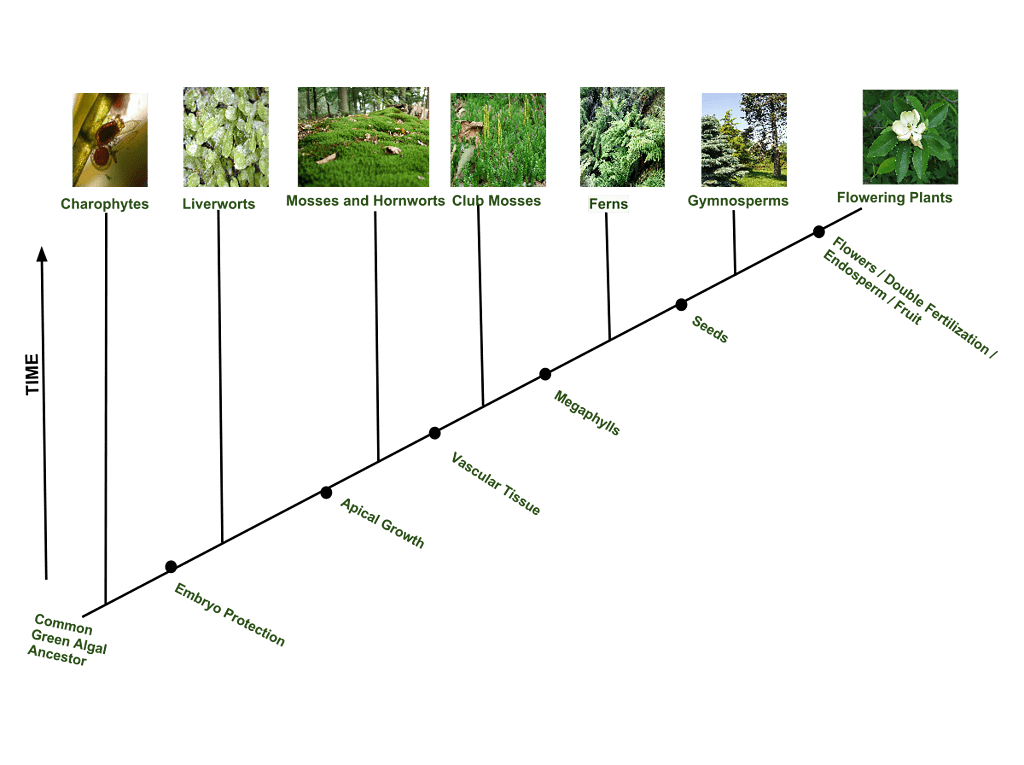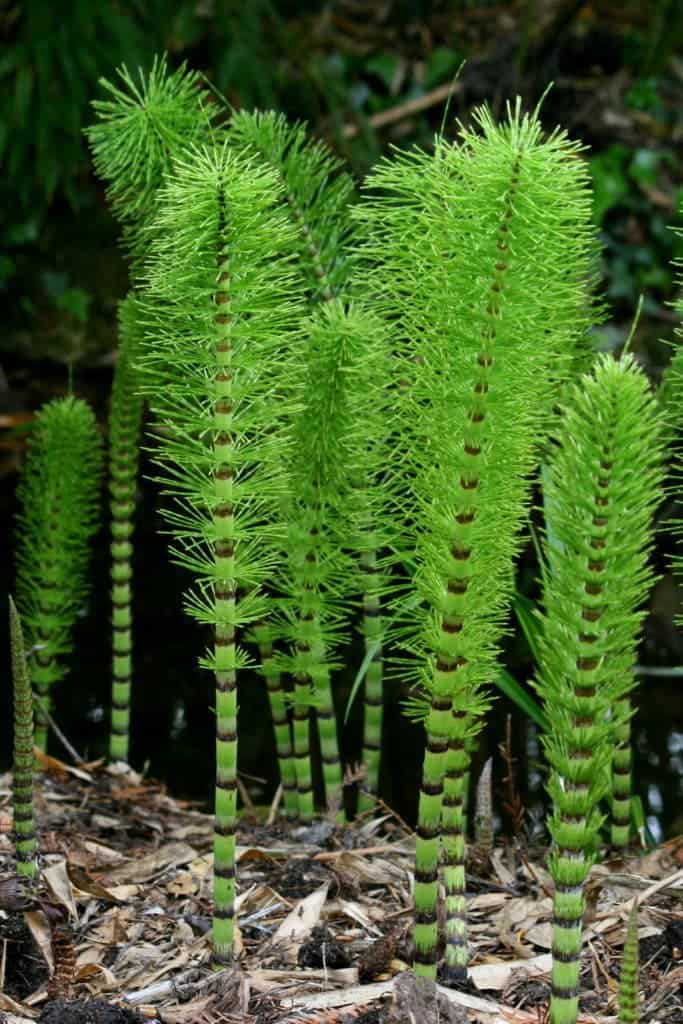Plants are an extremely diverse and fascinating group of creatures. Just like animals, they come in all sorts of shapes, sizes, and colors, each suitable for the environment they inhabit. Because there is an incredible number of different plants in the world, humans separate plants according to particular traits or features.
Perhaps the most important differences between plants refer to whether they have seeds or vascular tissue — based on the characteristics of their tissue and seeds, plants can be grouped into twelve different phyla (large groups). Incidentally, going through the different types of plants also takes us on an evolutionary journey: as plants emerged from aquatic systems and increased in complexity, they changed, and these changes are the basis of classification.

Common classification of plants
Before we go into the more scientific types of plants, it’s perhaps worth taking a brief detour to mention the types of plants that pop up in the common language, as opposed to scientific botany. This isn’t as rigorous or strict a classification, but it’s one that people use nonetheless.
Most commonly, people split plants into trees, shrubs, herbs, grasses, and ferns. Trees are like the tallest and strongest plants, reaching for the sky and providing a home for many animals. They have large branches and a thick, woody structure. Shrubs are more compact and closer to the ground, and they can also have woody parts. Herbs are like the culinary stars of the plant world, used to flavor and season our food. Grasses are smaller and non-woody, and they are the foundation of many ecosystems, providing food and shelter for countless creatures. Lastly, ferns are like the delicate and graceful dancers of the plant world, with their delicate fronds swaying in the breeze.
As mentioned, this isn’t exactly a strict classification — let’s move on to the more scientific one.
| Habit | Description | Example |
|---|---|---|
| Trees | Large, woody plants that have a single stem or trunk and a well-defined crown of branches | Oak, Maple, Pine |
| Shrubs | Smaller woody plants with multiple stems and a rounded or irregular crown | Rose, Lilac, Azalea |
| Herbs | Non-woody plants that die back to the ground each year and are typically used for culinary or medicinal purposes | Basil, Mint, Sage |
| Grasses | Non-woody plants with long, narrow leaves that form dense clumps or tufts | Wheat, Rice, Corn |
| Ferns | Non-woody, vascular plants with feather-like leaves | Maidenhair, Boston Fern, Staghorn Fern |
Non-vascular plants without seeds
Instead of producing seeds, these plants reproduce through vegetative means such as rooting and budding, producing offshoots, or producing spores. These should not be confused with fungi, which also reproduce through spores — fungi are not plants, they have their own separate classification.
Here are the types of plants that don’t have seeds.
Algae
There are three different types of algae: red, green, and brown. Algae live in water and, for this reason, are considered primitive plants — they also evolved very early, some 470 million years ago.
In fact, all plants started off in the water, and as single-celled organisms. More evolutionarily advanced plants left the water. Algae are photosynthetic organisms that range from unicellular organisms to large multicellular forms.
There are over 400,000 types of algae, some of which continue to be single-celled, and some which can grow to heights of over 100 feet (30 meters), like the giant kelp. The largest algae, M. pyrifera, can measure up to 65 metres (215 feet) long.
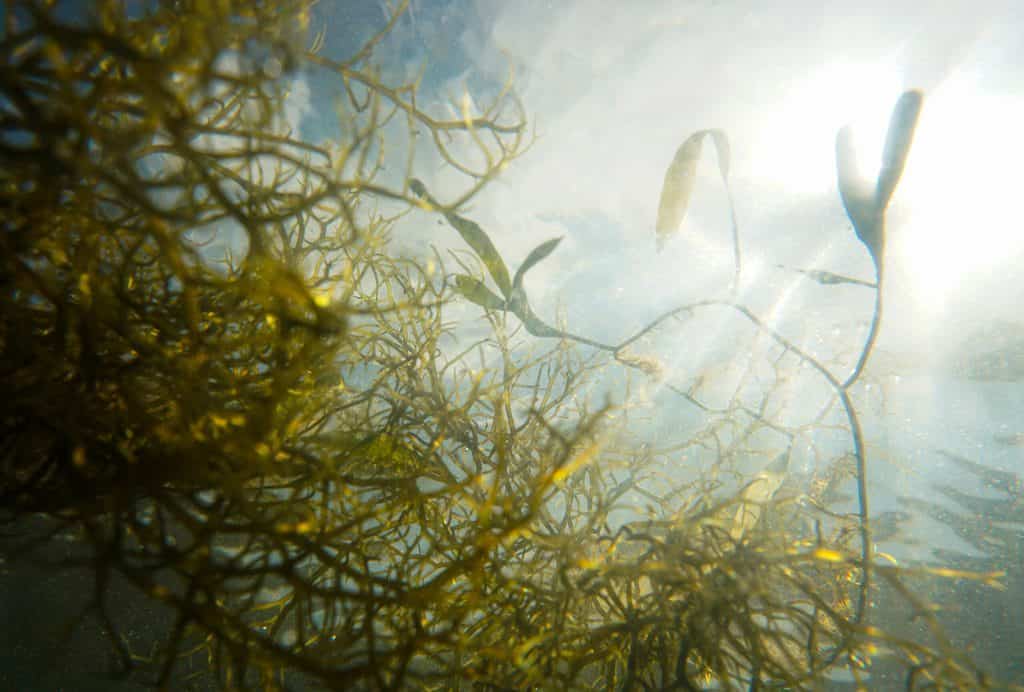
Liverworts and hornworts
Liverworts are almost as old as algae and can trace their ancestry to at least 470 million years ago. Along with hornworts, they are part of a primitive group of plants called bryophytes — a group that includes mosses (which we’ll get to briefly).
Liverworts are small plants that grow in damp environments. They are non-vascular plants, which means they lack the vascular tissue that can transport water from the roots to leaves — this is why they’re very small and need to live in moist places
A liverwort. Image credits: Lairich Rig.
Liverworts grow simply by expanding themselves. They do not have a true root, stem, or leaves. Hornworts are similar but have a sporophyte, which is a horn-like structure.
Both liverworts and hornworts play important roles in their ecosystems, and they’re often regarded as ‘indicators’ of environmental health. Despite their importance, many species of liverworts and hornworts are under threat due to habitat destruction, pollution, and climate change. Conservation efforts are underway to protect these fascinating species and ensure their survival for generations to come.
Mosses
Mosses are close relatives of liverworts and thrive in similar environments, damp areas near water sources. They are also non-vascular and reproduce by branching and fragmentation (they can regenerate from tiny pieces) or spores.
Mosses don’t even require soil to grow, which is why you can see rocks and trees covered in moss. Mosses grow apically — in other words, stems grow from their tips or other special points on the stem. Flowering plants also grow this way.
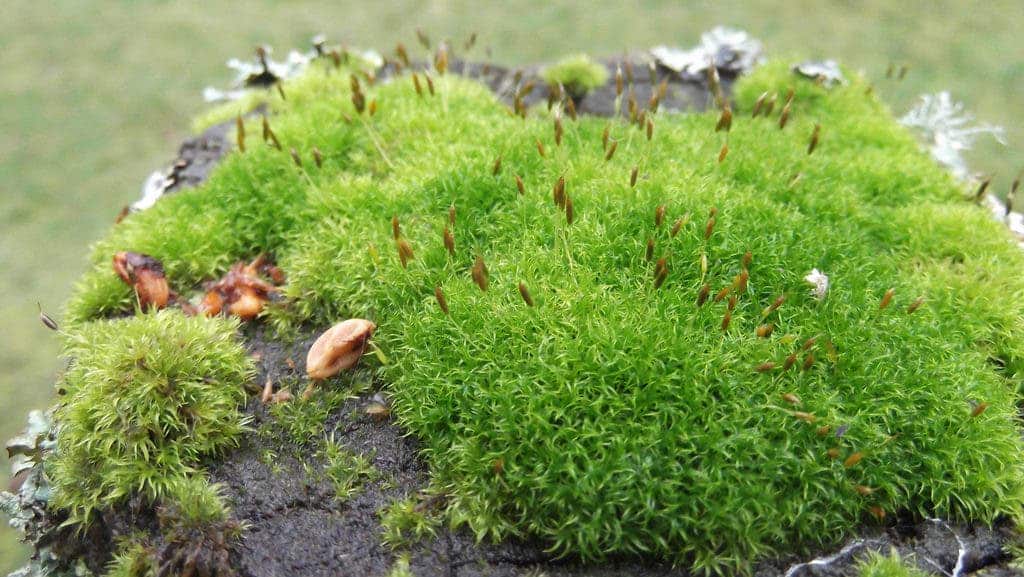
Mosses are an essential part of the biodiversity in areas such as forests, wetlands, and the tundra. However, they too are under threat, largely due to climate change and habitat destruction.
Vascular plants without seeds
Until now, we’ve only looked at non-vascular plants that don’t have seeds — now let’s look at seedless, vascular plants.
Ferns
Vascular plants are more recent than non-vascular ones. Ferms are still ancient, mind you — they came to be some 360 million years ago, predating the dinosaurs. But they’re a step up the evolution ladder.
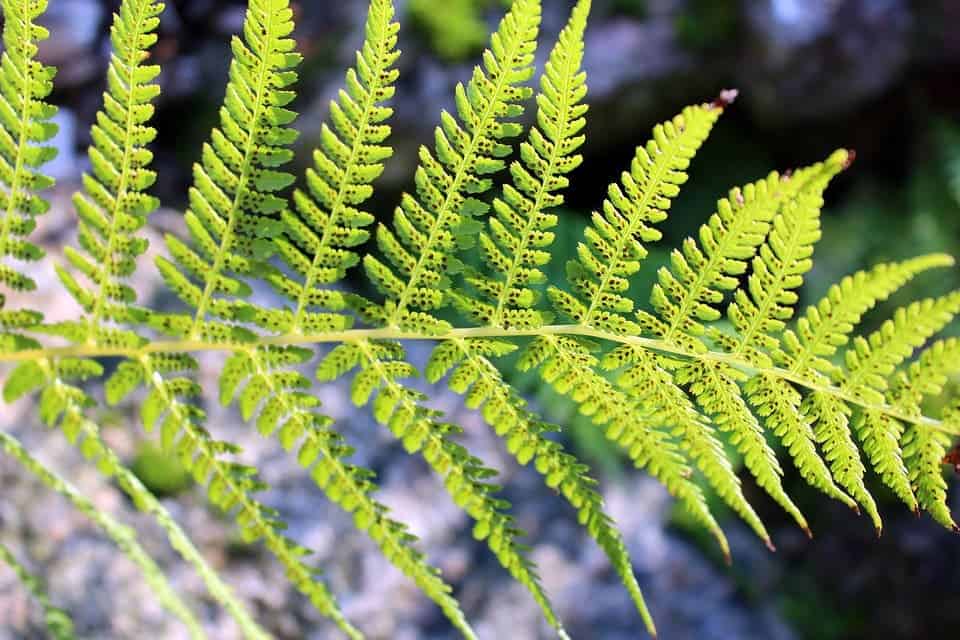
Ferns are known for their distinctive, feathery fronds that are composed of tiny leaflets called pinnae. These fronds grow from underground stems, or rhizomes, which store food and water for the plant.
Ferns need wet environments to reproduce so the sperm cell can swim to join with the egg cell. A new fern develops from the resulting zygote. However, ferns can survive periods with less water better than mosses and worts.
Millions of years ago, ferns dominated the land and were the most common plants. There were massive fern forests. Now, ferns play a role with less spotlight but are still essential to many ecosystems.
Other types of vascular, seedless plants
Horsetails are a very ancient type of plant. Image credits: Rror.
There are several other plants that have vascular tissue but lack seeds. Whisk ferns are primitive ferns that lack typical plant organs, such as leaves. Clubmosses have branching stems with simple leaves. Horsetails, also called snake grass or puzzlegrass, are found in the only extant (still living) genus in its family. More species within the same family existed millions of years ago, including very tall trees. Club mosses and horsetails are considered fern allies since all of these plants reproduce by spores and not by seeds.
All in all, there’s a large diversity of plants without seeds — but most of the plants people are familiar with will have seeds.
Plants with seeds
Some 380 million years ago, some plants started changing in a very different way. They started reproducing using seeds, undeveloped plant embryos enclosed in a protective outer covering.
A plant seed is a tiny package of life, containing everything a plant needs to grow and reproduce. It is the result of millions of years of evolution and marks a striking adaptation that has allowed plants to thrive and diversify in a wide variety of habitats.
As plants evolved and developed, they started colonizing different types of ecosystem, and changing in several ways. To overcome many of the challenges they encountered, they needed to multiply and spread in a way that gave the offspring the best chances to survive extreme temperatures and rough conditions. Seeds became tough, durable packages, containing all the nutrients, hormones, and genetic information that a young plant needs to get started in life. Over time, of course, seeds too diversified and become more sophisticated, developing features that give them even better chances of surviving.
So let’s have a look at some of these plants that make seeds.
Gymnosperms
Gymnosperms are naked seeded plants — their ovules are feely exposed before and after fertilization (not enclosed by any ovary wall), and the seeds formed lack a seed coating, hence the “naked seeded”.
Gymnosperms are a diverse group of plants. They range from towering trees like the giant sequoia to low-growing shrubs or even vines. They are found in a variety of habitats, from Arctic tundras to tropical rainforests, and they have adapted to these environments in unique ways.
Perhaps the most distinctive features of gymnosperms is their reproductive structures, called cones. All gymnosperms have two types of cones: male (which are smaller) and female (which tend to be larger). Cones are compact, usually woody structures that produce and protect the plant’s seeds and can come in a variety of shapes and sizes.
There are some of the best-known types of gymnosperms.
Cycads
Cycads are trees that like moisture and heat, therefore, they mostly grow in Central America, Africa, Southeast Asia, and Australia. They are slow-growing and slow-changing; in fact, they’ve changed so little that they’re considered to be “living fossils” by some biologists.
They generally have long, thin leaves, and produce a cone-like structure which makes them look like palms with cones. Cycads possess a crown of large compound leaves and a thick trunk. There are only a few species left, but they were very common during the Jurassic period, which is often called the “Age of Cycads.”
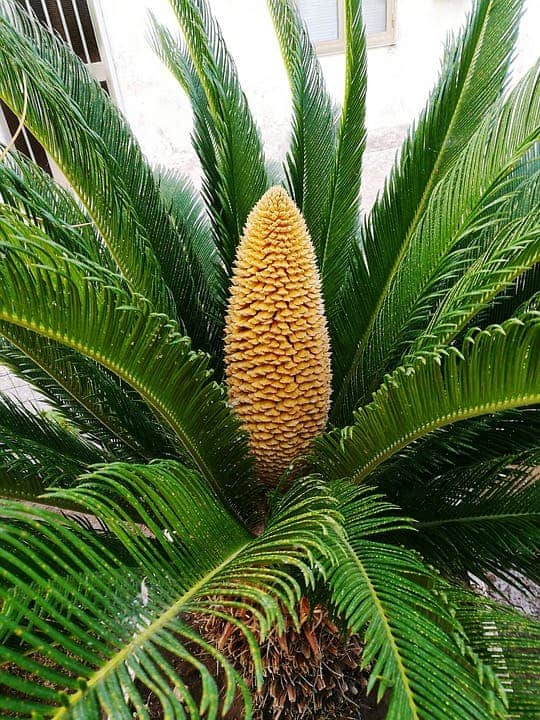
Ginkgo
There is currently only one ginkgo species in existence, Ginkgo biloba. It has not changed very much since the Permian period — when it covered large parts of the world — and it is also considered a living fossil. Gingko plants have fan-shaped leaves, and trees are either male or female. They produce fleshy seeds that have a strong odor.
Ginkgo is only found naturally in central China, but has been purposefully planted in gardens and parks around the world. Flowering plants, however, are out-competing it, and the current environmental conditions are less favorable for Gingko. Nevertheless, the one resilient plant keeps on enduring.

Gnetophyta
The phylum Gnetophyta is also a gymnosperm and consists of three genera that are not closely related. There are about 70 species in total. Ephedra is the largest genus, and its plants grow in deserts. Welwitschia plants grow in the desert in southwestern Africa; they have long, thin leaves. The last genus in the phylum is the namesake called Gnetum.
The most distinctive characteristic of gnetophytes is their reproductive structures, which are unlike those of any other group of flowering plants. They produce large, woody cones that contain their seeds, much like gymnosperms, but they also produce flower-like structures that draw pollinators.

Conifers
Conifers have woody trunks and produce cones with seeds, and they’re some of the most familiar types of plants on the planet.
They grow mostly in cold northern climates and keep their leaves throughout the year. Conifers have naked seeds that are protected by cones, and the male and female cones are produced on the same tree. The pollen cones are male and produce the pollen that is spread to the female gametophyte found inside the seed cone. Seed cones are female and contain eggs on scales that form seeds when fertilized.
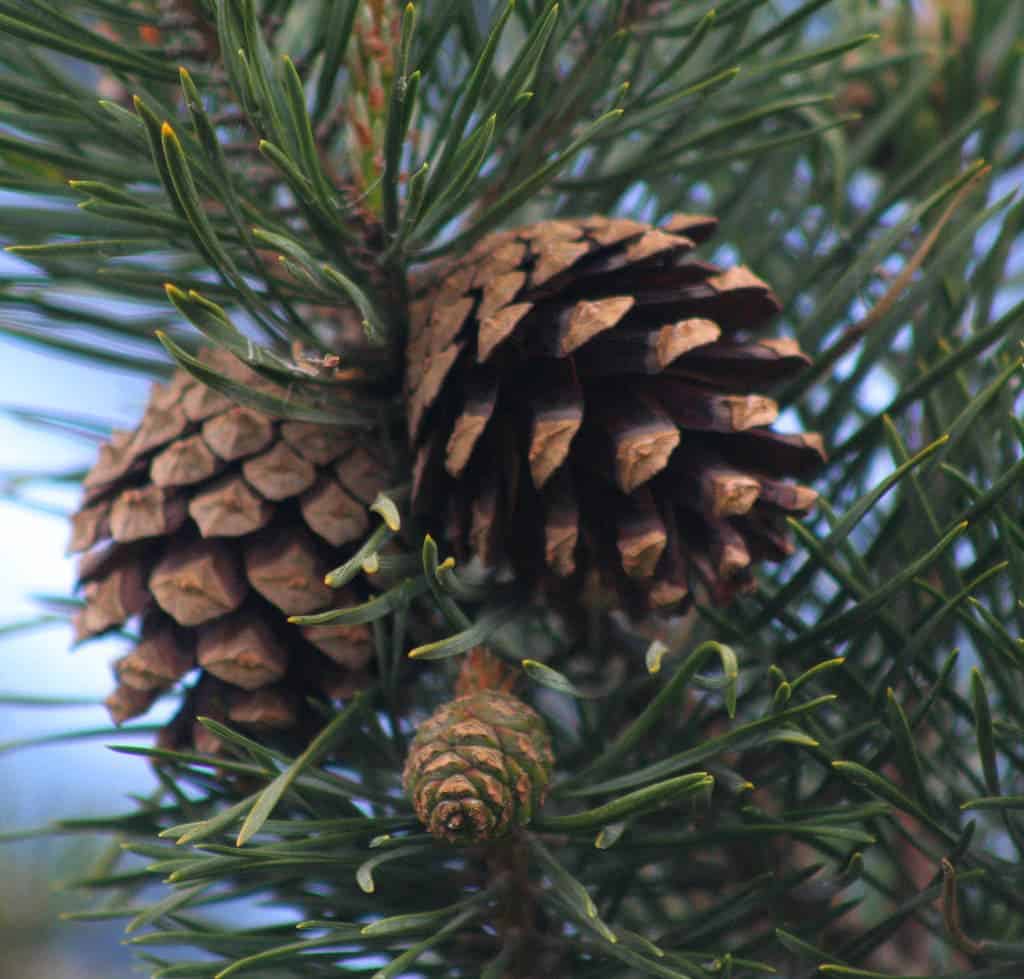
Angiosperms
Angiosperms, also known as flowering plants, are a widespread and common type of plants. They come in all sorts of shapes and sizes, ranging from tiny herbs to towering trees, and can inhabit almost all ecosystems.
Their most distinctive characteristic is the flower. Flowers serve as a vital means of attracting pollinators, and the come in a large scale of varieties.
Angiosperms appeared some 275 million years ago — still a long time ago, but they’re the “new kids on the block” in terms of plant evolution.
Flowering plants
Flowering plants, also called angiosperms, have male and female parts. The male parts produce pollen that is dispersed, and upon reaching the female parts produce an embryo that develops into a seed. Wind and pollinators, like bees, can pollinate these plants.
Angiosperms produce flowers and fruit, and the seeds are produced and protected within this fruit.
Angiosperms are divided into two groups. Monocotyledons (monocots) have one seed leaf, while dicotyledons (dicots) have two seed leaves. Monocots have parallel veins, scattered vascular tissue, and flower parts that grow in multiples of three. Dicots have net-like veins, vascular tissue in rings in the stems, flower parts that grow in multiples of 4 or 5, and are often woody.
Angiosperms form the plant group most equipped to handle dry conditions, which is why they are now the most widespread plant type.

We are now living in the era of flowering plants. Evolutionarily, they are the most advanced and they make up the largest proportion of plants in the world. There are still many other diverse plant species that grow alongside them.
So there you have it, those are the most common types of plants. Evolution doesn’t really stop, and plants keep evolving, but it takes a long time to create a new group of plants. For now, at least, these are the types of plants we have on Earth — we’d be wise to protect them.
A simplified table of the types of plants would look something like this:
| Group | Characteristics | Reproduction |
|---|---|---|
| Non-vascular plants | Simple structures, such as rhizoids instead of roots | Reproduce through spores or spores |
| Ferns and fern allies | Specialized tissues for transport of water and nutrients | Reproduce through spores or spores and spores |
| Gymnosperms | Produce cones with seeds that are not enclosed in an ovary | Reproduce through cones and seeds |
| Angiosperms (Flowering plants) | Produce flowers with seeds enclosed in an ovary | Reproduce through flowers and seeds |
A more advanced table of the types of plants would also include:
| Group | Characteristics | Reproduction |
|---|---|---|
| Non-vascular plants | Simple structures, such as rhizoids instead of roots | Reproduce through spores or spores |
| Bryophytes (Mosses, Liverworts, Hornworts) | Simple structures, lack of specialized transport tissues | Reproduce through spores or spores and spores |
| Pteridophytes (Ferns and Fern Allies) | Specialized tissues for transport of water and nutrients | Reproduce through spores or spores and spores |
| Gymnosperms | Produce cones with seeds that are not enclosed in an ovary | Reproduce through cones and seeds |
| Conifers (Pine, Fir, Spruce) | Produce cones, needle-like leaves | Reproduce through cones and seeds |
| Ginkgophytes (Ginkgo) | Fan-shaped leaves, unique reproductive structure | Reproduce through seeds and unique reproductive structures |
| Cycads | Palm-like appearance, large cones | Reproduce through cones and seeds |
| Angiosperms (Flowering plants) | Produce flowers with seeds enclosed in an ovary | Reproduce through flowers and seeds |
| Monocots (Lilies, Grasses, Orchids) | Characteristics such as parallel-veined leaves and flower parts in multiples of 3 | Reproduce through seeds |
| Dicots (Roses, Tomatoes, Oak trees) | Characteristics such as netted-veined leaves and flower parts in multiples of 4 or 5 | Reproduce through seeds |
So, which one is your favorite?
